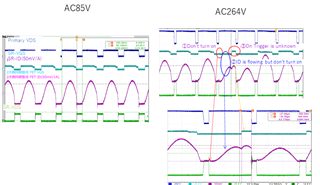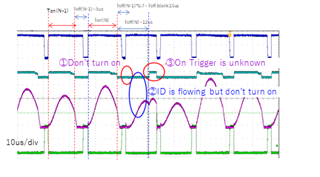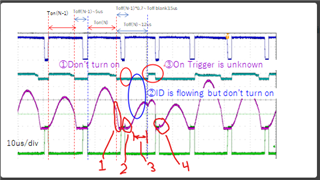Other Parts Discussed in Thread: UCC28782,
Tool/software:
Hi team,
I am using UCC28782 and UCC24612.
When the AC input is low, it operates stably, but when the AC input becomes high, pulses are missing or false on occurs.
① At this time, ID is not flowing, so I understand that VTHGON cannot be detected.
② Even though there is a sufficient ID flowing, it does not turn on. Why is that?
③ What are the conditions for turning on at this timing?




